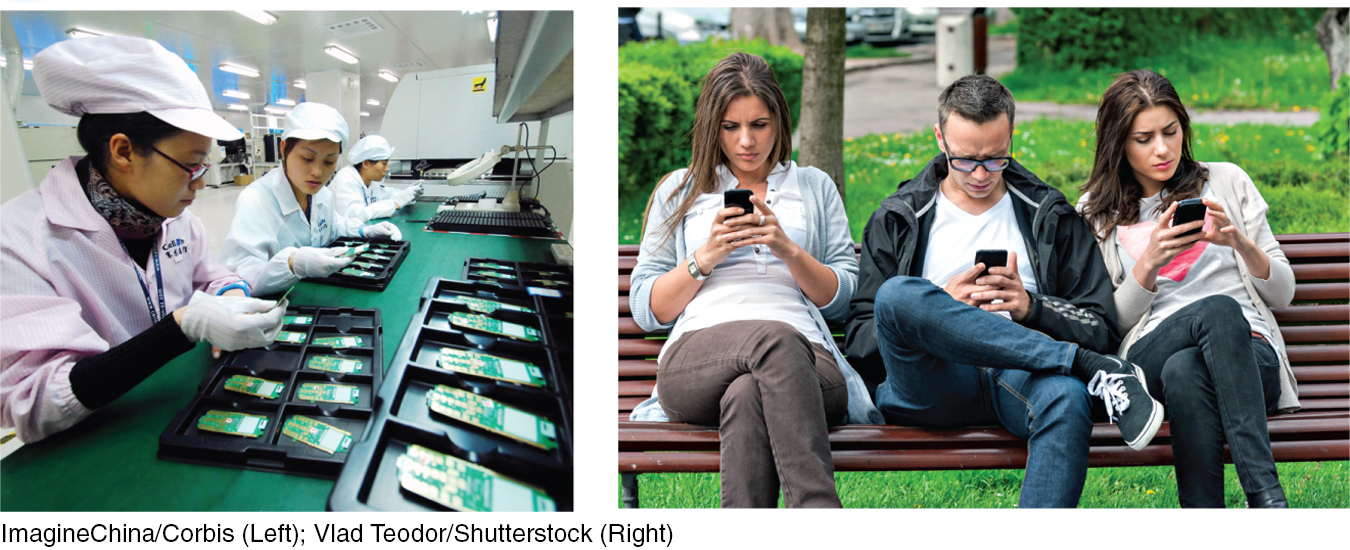Chapter Introduction
569
International Trade, Capital Flows, and Exchange Rates
CHAPTER 20
![]() THE EVERYWHERE PHONE
THE EVERYWHERE PHONE

What You Will Learn in This Chapter
How comparative advantage leads to mutually beneficial international trade
The sources of international comparative advantage
Who gains and who loses from international trade, and why the gains exceed the losses
How tariffs and import quotas cause inefficiency and reduce total surplus
The meaning of the balance of payments accounts and the determinants of international capital flows
The role of the foreign exchange market and the exchange rate
 | interactive activity
| interactive activity
“WE FELL IN LOVE WHEN I was nineteen / Now we’re staring at a screen.” These lyrics, from Arcade Fire’s 2013 hit song “Reflektor,” describe an era in which everyone does indeed seem to be staring at the screen of a smartphone. Apple introduced its first iPhone in 2007, and since then the iPhone and its competitors have become ubiquitous.
They’re everywhere—
In fact, a study of the iPhone 4 estimated that of the average factory price of $229 per phone, only around $10 stayed in the Chinese economy. A substantially larger amount went to Korean manufacturers, who supplied the display and memory chips. There were also substantial outlays for raw materials, sourced all over the world. And the biggest share of the price—
So where do iPhones come from? Lots of places. And the case of the iPhone isn’t unusual: the car you drive, the clothing you wear, even the food you eat are generally the end products of complex supply chains that span the globe.
Has this always been true? Yes and no. Large-
In recent decades, however, new technologies for transportation and communication have interacted with pro-
This chapter examines the interaction of national economies. We begin with a discussion of the economics of international trade. With that foundation established, we move on to discuss how trade and capital flows are part of the balance of payments accounts. Finally, we look at the various factors that influence exchange rates.